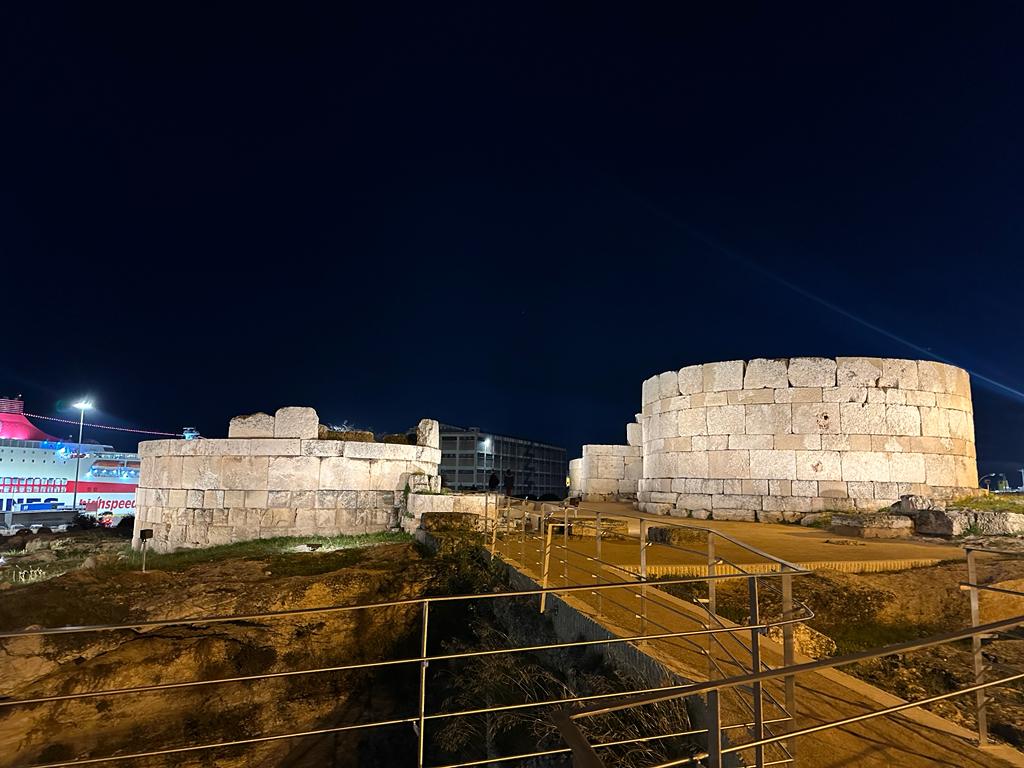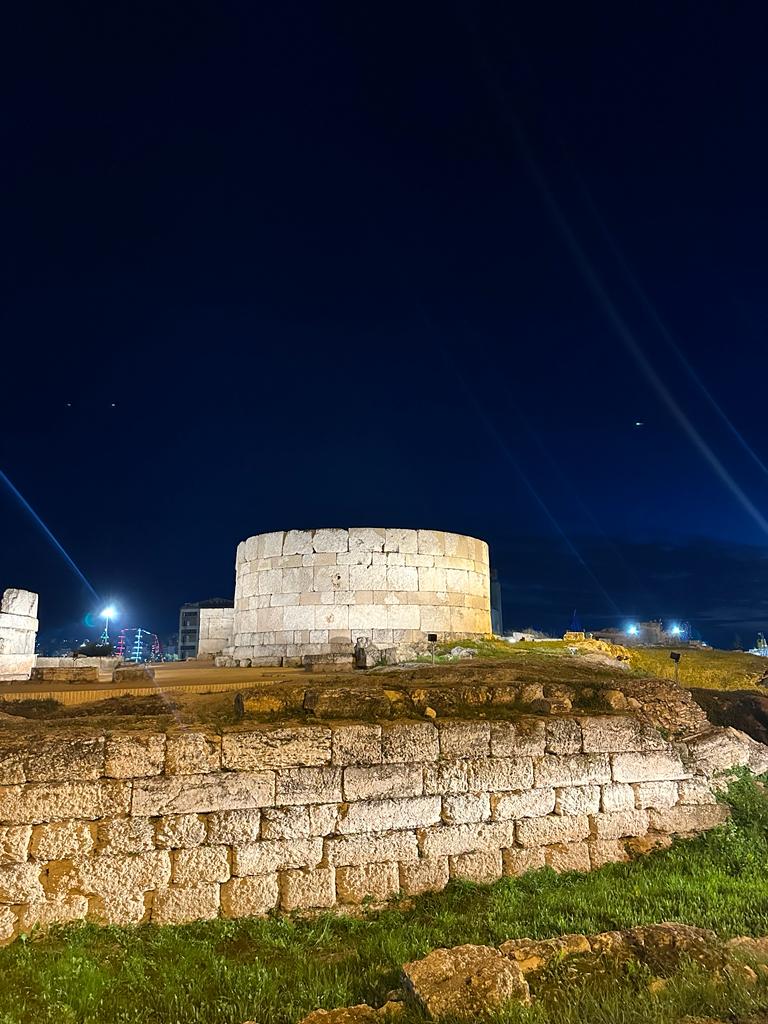
Greece inaugurated the project of lighting the Ancient Ietonian Gate on the walls of the ancient port of Piraeus this week, the largest archaeological site on the coast south of Athens.
The Gate is located to the west of the ancient port of Kantharos (the current port of Piraeus), which it protected. It was built in 411 BC and it was one of the two entrances to the fortified city of Piraeus, through which exclusively military forces passed.
Greek Culture Minister Lina Mendoni pointed out that “The walls of the port of Piraeus, part of which is the Ietonian Gate, are one of the most important works of ancient Greek fortifications. Here, one can recognize the fortification techniques developed from the 5th to the 3rd century.
“It is very important that this excellent work should be seen properly lit and enjoyed by citizens, visitors, and those on board ships arriving at the great port.”
The dating of the surviving fortifications goes back to different phases, starting from the 5th century BC and continuing until the end of the 3rd century BC.

According to the Athenian historian and general Thucydides it was built by the brilliant military leader of the Battles of Salamis and Marathon, Themistocles.
Piraeus long wall and the Gate
The Long Wall fortifications that connected Piraeus to Athens included the Northern Long Wall measured around 6 km in length and ran from the southwest of Athens to the northeast of Piraeus.
The second wall ran to Phaleron and, therefore, blocked the land access to the port.
In 446 BC a Middle Wall was added which ran parallel to the North Wall creating a narrow protected corridor between the city and port and which provided invaluable farmland and living space in times of war when the wider region of Attica was under attack, as it was, for example, during the Peloponnesian War (431-404 BC).
Located just 7 km (5 miles) southwest of Athens, Piraeus is a limestone peninsula offering natural harbors which the Athenians exploited to create what, at its height in the 5th century BC, would be the most important port and biggest naval base in the Greek world.
The port became a thriving settlement in its own right and was a vast complex of ship sheds, shipping offices, warehouses, banks, shipyards, and many other secondary businesses.
Following Athens’ defeat in the Peloponnesian War in 404 BC, Piraeus never quite regained its former glory. However, in 375 BC the port could still accommodate 100 triremes.
During the Macedonian occupation from 322 to 229 BC Piraeus and Athens became less important as a Mediterranean trade centre and the end finally came in 86 CE when the Roman general Sulla sacked Athens and destroyed the port.
See all the latest news from Greece and the world at Greekreporter.com. Contact our newsroom to report an update or send your story, photos and videos. Follow GR on Google News and subscribe here to our daily email!



